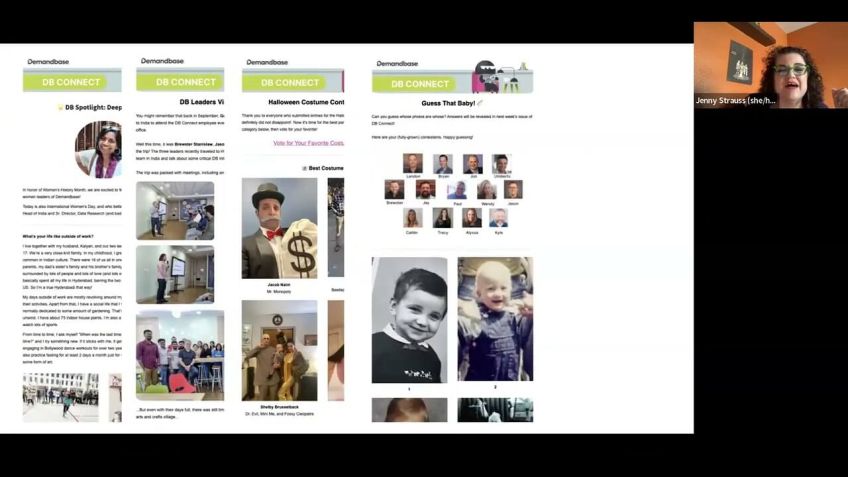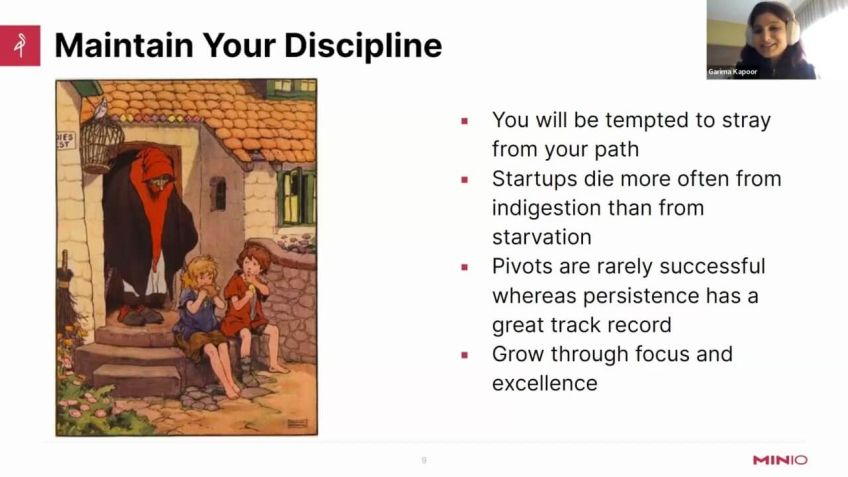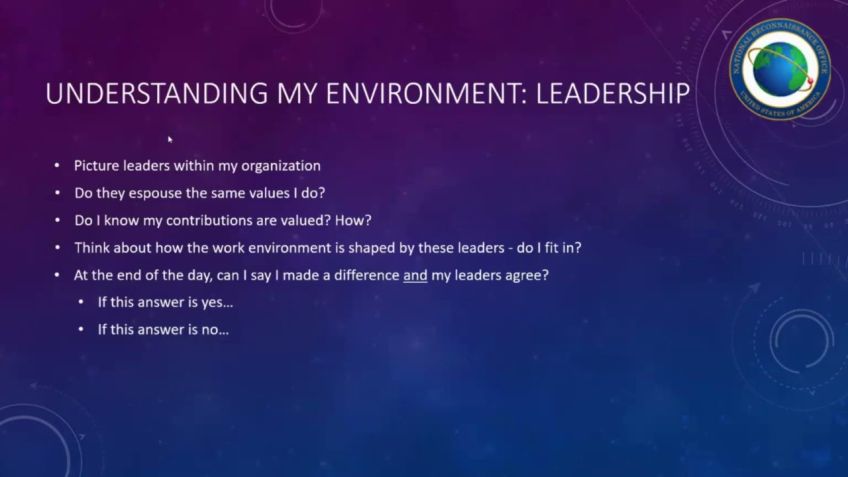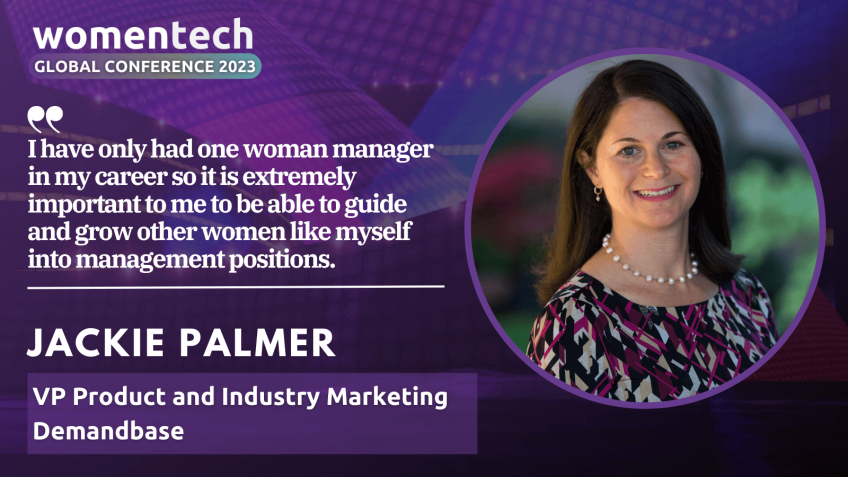Driving Culture by Engaging Champions
Michelle Brooks
Chief People & Culture OfficerDriving Company Culture by Engaging Champions
Welcome to the first time presentation by Security Compass' Chief People and Culture Officer, on driving culture by engaging champions at the Women Tech Global conference. A value-packed 20 minutes loaded with effective strategies on creating a strong company culture by engaging employees. This article discusses how to identify champions within your culture and how to engage them to drive a positive culture for your organization.
About Presenter and the Need for Cultivating Company Culture
Having joined five years ago with an intentional focus on building systemic culture, leveraging culture champion programs as its foundation, lots has been learned. It’s noteworthy that the security company is about 200 employees strong, meaning these strategies could work for organisations of any size.
Culture is seen as the “how” of our work, a defining factor that affects the behaviors, feelings, and values exhibited across the company. A vital part of creating an engaging workplace, is to boost employees’ vested interest and best efforts in the company's success.
The Aim: Engaging Champions in a Diverse Set-Up
Identifying champions within organisations, acknowledging their contribution in decision-making processes and engagement of contrarians is discussed. A greater part of this approach dwells on identifying the right people since it’s believed that when you have the right people engaged, a majority of the challenges are tackled, promoting effective decisions for the organization.
Identifying and Engaging Champions
First, tap into existing networks that show passion and excitement about making the organization great. These champions are the ones who volunteer ideas and question proceedings. Next, ensure a diversity of thought by bringing forward individuals with different perspectives in tackling culture challenges. Lastly, engage contrarians, who typically challenge status quo, to help in rounding out the team.
Effective Relationship with Contrarians
Develop open lines of communication that encourage contrarians to voice their concerns about proposed changes. Empower contrarians in decision-making processes and let them drive the change. This helps to ensure a smoother transition for the organization and overcome resistance.
Key Tips to Engage Champions and Contrarians Effectively
- Clear Role Expectations: Make sure individuals involved understand the decisions or inputs they are providing.
- Strong Facilitation: Essential for facilitating a difficult group of people while maintaining safety and respect.
- Spotlight Champions: Avoid taking all the glory. Let the champions push the change forward for better buy-in within the organization.
- Listens: Tackle challenges with an open mind and readiness to hear things that may be hard.
In conclusion, developing a unique company culture and driving it positively requires pragmatic and vocal champions who should be comfortable with differing perspectives and display problem-solving skills. These qualities not only lead to better buy-in and adoption of changes, but they also result in better solutions and significant changes in company culture.
Feel free to connect or ask any question about engaging culture champions in an organization to foster a positive company culture.
Video Transcription
All right. Well, hello and welcome to the Women Tech uh Global Conference. It's my first time presenting here and I am delighted to uh learn from everyone and uh make these connections. So I will go ahead and get started.We only have a short 20 minutes and uh lots of content to get through. So we'll go ahead and get started and let people join uh as as they come in. So uh the topic today we're gonna be talking about is driving culture by engaging champions. So we all want to have that really great company culture. Uh And we want to be having engaged employees. So I'm gonna talk specifically about uh how to identify champions within your culture and how to engage them so they can really drive a positive culture for your organization.
Now, I will share a little bit about myself because I will be using a few case study examples so that you can learn from uh the things we did, right? And not so right. Um Inside the session. Um So I am the Chief people and Culture Officer at Security Compass. Security Compass is a cybersecurity tech company and I joined about five years ago with the intentional focus of building systemic culture. And I use culture champion uh program to really be the foundation of that.
So lots of learnings to share. And uh it's important to note that security company is only about 200 people. So I have a very small people and culture team. So everything we're talking about today can really work for any size of organization. So let's talk a bit about what culture is and um how and why it's important uh to, to be driving it in a positive direction. So um the way I view culture is that it's the how of our work. So we have our goals, initiatives, um revenue, all that kind of fun stuff we're trying to do as an organization, but the culture is the how it's the feelings of the organization, the behaviors and how our values as a company show up um across the, the company. And when we have a strong company culture where we see really positive values and behaviors that can really create an engaging workplace, which is ultimately the goal we're, we're going for when we have engaged employees who are in that the, the headspace that they have a vested interest in the company's success and they're volunteering their best efforts.
That's really the engine for, for our organization to be successful. So we really care about engagement and culture. And so how do we engage these champions to help us build that together. So I'm gonna be focusing on two topics, identifying these champions within your organization as well as engaging them. Uh Full disclosure, I'm gonna spend about 80% of the time talking about identifying them because my core belief is that when you have the right people in the room, um that's really the majority of, of the challenge and that, that group will together make great decisions for your organization.
So let's jump in to how to identify those folks for your organization. And as we do that, um you may have an organization that's building a, a committee, an engagement committee, a culture committee. Um Or you may be just looking like, how do I reach out to those few folks across the organization? You can apply these principles no matter what form your culture champion uh program is looking, these are just best practices for how to approach folks around culture. So as we look at identifying them, um the first thing is you should tap into that existing network. There already are people who are excited and passionate about making a great organization and care about the company culture and uh how the organization works. So they are the people who are putting their hands up, they have ideas and questions. So obviously, start with that. That is a really great base layer of passionate folks who care about what you're trying to do. Second thing I would say is that you have to round out that team for diversity of thought. And we're gonna get into this a lot more, but this is about um bringing people forward with a very different perspective so that you can get to the right answers around your particular culture challenges. And also we want to engage contrarian.
So these are the folks who push the status quo and we want to bring them into the fold as well because that's going to really help us round out our team. So I think the volunteering parts relatively self explanatory. So I'm gonna spend the majority of these short few minutes um talking about diversity of thought and how to get those folks to the table um as well as the contrarian piece. So we talk about diversity of thought. I want to talk for a minute about why it's important and how it showed up in our examples and, and how you can apply this in your workplace. Um So this is a bit of a silly picture. Um Of course, it's an elephant, it's not necessarily appropriate for the workplace. But what's neat about this is it really shows that you've got a few people here all in the exact same environment. Elephant, sunny day, grassy area, but they're all having uh extraordinarily different experiences.
And we think about it from a workplace perspective. We've got this gentleman here at the front. Um And he sees this beast of an animal coming at him with these really sharp tusks. So if you are standing in his shoes, you probably could assume that he might be afraid he's gonna have a fear of fight or flight response based on this justifiably. So, um, but if you go just a few steps away and you look at the gentleman over here by the ear of the elephant, you can see that he's having a really drastically different experience. Um, you know, he's seeing an animal kind of coming at him. Um It's a hot day and the ear is fanning him, he's feeling pretty good. And so it's interesting to me is that you really have to put yourself in the shoes of each of these folks to really understand how they might all be perceiving the exact same situation. And as a a leader who's trying to create culture, you have to start from the place that you are only one of these people, right? Um And, and maybe depending on the situation, you may be a different one. but that you have to bring people together in your organization to understand all the sides of the elephant. So when we talk about that in a workplace, what we want to see is when you're bringing people together to make a decision.
In this example, how to build a great culture. You want to look at people at all different departments in the organization, all different levels. Uh You wanna look at different graphic groups as well as now we have to factor people who are working primarily remote hybrid or in person all the time. So we want to round out that group so that we get all the different views from all the different sides of the elephant as we make our decision. So I'll give you an example of, of how we did this and, and some really great learnings um on perspective. So security companies were a best workplace in Canada. Great. We, we uh do so many surveys with our team and we're used to scoring pretty well. Um But in this particular example, we scored 57 on a question specifically related to awareness around career opportunities. And what was super upending for us is that there was a large spread within the racial demographics. So those from the bop community were scoring us pretty low. Um And so I brought this to my people and culture too. This is, this is a big concern. We want to really work on this and we were frustrated. Um We post everything on our internal website, our external website, we come posted in our company updates.
We have an internal transfer policy that applies to everybody and 20% of our organization actually had AAA job change within the year. These are great numbers. So how can people feel this way? Um And so we were, we, we didn't really have any way to action this feedback because we just couldn't get out of our own paradigm. So good for us, we had an engagement committee with a diverse group of folks and we brought this forward to them. And what was super interesting is they shared with us that when they answered this question or some of the people did that, they specifically were talking about learning opportunities or projects or things of that nature where we were in the people and culture department. Of course, we're thinking about jobs and promotions and all that stuff. We are the ones who make the career frameworks and the policies. So when we put ourselves on a different side of the elephant, we had a very different experience further, further to that because we, we were talking to people from that IO community, they shared that they felt that their leads unconsciously sometimes picked people for projects in learning that they more easily identify classic case of unconscious bias.
But it's not something we were able to um view because of our own paradigm. And then of course, uh we do have a team of introverts and um we did uh get some feedback as well that perhaps um people didn't feel included because they weren't the first to speak up. Um And again, my team didn't necessarily represent that introvert group. So by bringing that those different folks to the table, we were able to really better understand the experience of our team and create some new actions that were targeted toward, towards those experiences. Now, I think, I hope some of you are already doing this already as you're engaging in your Ch Champion program. Um, but I'm gonna ask you to take it one step further and I want you to engage contrarians. So who are contrarians? Well, you all have them. They are those folk who tend to be a bit disagreeable. They have lots of questions, they probably speak up and say things, no one else will say. They're also the people that when you see their hand up on a town hall or something you're like, oh no. Um and, and those folks can often be mislabeled as negative um or, or, or um or not great employees.
But um in my opinion, these are the people you want to latch on to and bring into some of these culture discussions because their views probably represent more people than you think. So when you understand their side of the elephant, you're gonna be able to drive better solutions.
So again, let's look at a real example of how this worked and, and, and what we, we did well, um and when some, some of the learnings we had there. So the example here was at security compass, we wanted to collect demographic data so that it would support some of our diversity, inclusion and belonging uh initiatives. We felt that we had better understanding of who is answering questions, which way we were able to um in that case, um create better solutions. But some perspective in Canada, it is not a legal requirement and we have never collected this data before. So you can imagine we knew we were going to have some resistance to add insult to injury. Our company is a cyber security company. So you can imagine the makeup of our employees, they're not, they're particularly cautious about what information they share. In fact, so cautious that um some folks won't even put uh their picture in our hr is system or they'll put their date of birth in for on boarding and remove it a week later because they don't want people to have access to that information, right? Fully. So welcome to their opinion. But you can imagine that again, this is what we looked like this time. We weren't frustrated. We were afraid, we knew we wanted to do this initiative and it was great for the greater good of the organization.
It would give us better data to create better culture for our company, but we knew we were gonna have a crazy amount of resistance. So, what did we do? Well, we really uh chose to lean in to our contrarians. In fact, we specifically um reached out to the people who we knew would be most adamant about this change. The folks who we knew would be um actively opposing it. And we invited them to our group discussions, we encourage them to come to us, one on one and we asked them to speak their minds and with no hindrance because we needed to truly understand their side of the elephant if we wanted to really make a change. Uh This was challenging. Um But we did it and we got some really great con contrarians into the group. And once we got into a group setting and even on our one on one calls, it was really important. Um Best practice for us is to engage those concerns and be the first to put them out there in the open. We can't, for the sake of saying elephant again, leave the elephant in the room. I would start the meetings by saying, I understand no one wants to put this in and that's legitimate and fair. But this is our goal. How can we find a way to get there together?
And it really just took the tension out of the room and it also meant we could just get to work. We didn't have to spend energy on acknowledging we disagree. We knew there were challenges and when we did that, we were also allow, allowed ourselves to empower this diverse group of people to make this decision together. I will tell you this was the hardest thing for me. I was pretty, had a vested interest in what we were trying to do and I really felt passionate, it was the right choice. Um But I really had to empower this group of people to for us to work together on this decision and decide how we would roll it out. Now, the great news is it was tiring and painful. But um we did launch this and we did ask for the demographic data uh within our organization and some interesting learnings. Our contrarians were very clear, we needed to be very explicit about it being not mandatory. And if anything, we almost pushed, prefer not to answer, they felt like if we even had a hint of that, it was a requirement, the whole thing would fold. Um So we definitely listened to that advice, which we wouldn't have had otherwise.
The next thing is in a surprising turn of events. My original ask was to put these demographic questions in our survey tool because that was my use case. But this group, after we worked through it together, they actually chose to put it in the hr is system. Yes, that's right. The same hr is system that they wouldn't even put their pictures in previously. And the reason they did that was because two reasons the first was because through conversation about our hr is and really allowing them to talk about the security protocols and who has access to data. It actually created more comfort with the tool. And so they actually started to have more faith in that tool than they had before by bringing them into the conversation. The second point was our bipoc community shared that they felt it was a bit other r for us to keep asking their demographic data in every tool. They'd rather just answer it once and then move on. So that was great insights that, that I certainly would not have brought forward if it was just me making those decisions. And then of course, because we had all of this information from our contrarians, our communications were so much better. We put on the table, what we knew what the concerns were. And we actually had those folks drive the change. I did not take the spotlight here.
I let those folks drive the change so that it would be more sticky and we'd have more buy in within the organization. And as I said, this was not an easy, I definitely have some battle wounds from this one. Lots of missteps. Um But I think ultimately, all of that was worth it because we got to a really great result and ultimately improved engagement and got some really great data to use. Now, I do say this is challenging. So there are a few tips and tricks that I do want to share with you. If you're going to spending the energy to round out that group of, of, of champions as well as engaging the contrarians. The first would be role expectations as always, you want to make sure people understand when they are making a decision as they were in my last example, or when they're just providing input for which someone else needs to make a decision, this can really get you in some trouble.
So be super clear about role expectations. Strong facilitation is also essential. You are intentionally bringing together a challenging group. So you need to whomever is facilitating, be able to spend a lot of time and energy and have experience creating a safe space for people to contribute and know when to pull back the reins a little bit. If people are getting off the rails or things are getting too personal. So you have to have some strong facilitation and you have to spotlight those champions if you take all the glory, um not only will your change not be as sticky, but people aren't gonna participate as well. So you wanna push those people forward so they can bring the change forward for your company. And last, but not least you actually have to listen if you are creating an engagement or a culture committee or program of anything of that nature and you're doing this diversity of thought and bringing in these engagement, but you already are gonna stick to your own paradigm, you're gonna do some damage.
So you really have to be mentally prepared to listen to things that um might be hard to hear and um also be able to bring that forward to your leadership and make sure they're ready to hear. So, what I'm proposing is not the easy road. Um In fact, I am telling you that you need to take the hard road with intention and sometimes this boulder is gonna be, you're gonna be yanking it up the hill like we are in the picture and sometimes you're gonna be pushing it uphill and a lot of times it's gonna roll you over and it's also gonna be slower.
I wanna move an eclipse too. I want to achieve big things, but sometimes big problems need bigger solutions and you need to take your time to do it. But if you do, if you engage those passionate people, you get a diverse group, you get those contrarians in, you can not only get better buying and adoption for the challenges you're trying to bring forward, but also you can create better solutions and you can make material amounts of change to your culture within your organization.
So that's it for me. Um I think we have a couple of minutes. I've put my contact information in here. If anyone wants to connect inside the tool on the tool uh outside the tool, I'm happy to do so. Um And I think um we may have a, a minute or two for questions if, if anyone has uh there's a question here, I'll try to answer. How do you keep contrarians view positive in the group? Uh Good question, Sarah. I think uh the key is to not need it to be positive. Um You want them to share their authentic views. Um You do need to have ground rules about respect and how you're going to communicate. So I do recommend when I talk about facilitation to set those ground rules and make sure it doesn't get personal, but they don't have to be positive. You need to hear the negative in order uh to really get to, to change. So, um, that, that's my approach, it's brave and it's hard and it can be painful. But um I I that's my approach. If you're really worried that somebody's presenting their news really negatively, um then sometimes you can take that offline and have some of those conversations, one on one.
If you're really worried, it's gonna be a negative influence, not sure how much time we have, but I'll just keep going until like I get cut off. Um What competencies do the champions need to have in order to drive change? Um They need to be willing to uh speak up and some people need a bit more prompting and coaching and a bit more comfort. But you need to set clear expectations when you ask somebody to join your program, whether it's a volunteer, um somebody rounding out or contrarian that they do need to speak up um in the sessions. Um So they need to have that in them or, or be able to bring it out. Um They do you want people who are somewhat pragmatic and will listen but also as well. Right. So they need to be also comfort, comfortable with hearing different perspectives and have that sort of problem solving technique. So these are the things I, I keep it relatively open, but these are when I see people with those two.






